 Bob Salow, WA1IDA writes:
Bob Salow, WA1IDA writes:
It was so good for the past two years that the BAA Half Marathon is now in the category of “Third Annual.” The event got huge acclaim – largely because of the skills and experience of the organizers and support staff (we are definitely a part of that). The Half is run almost entirely in Boston (2% in Brookline), with local, national and international athletes.
We have been asked again this year to support communications for this event doing our usual medical, water and administrative tasks. We definitely need your help. Time is short.The Half Marathon will be held on SUNDAY, 12 OCTOBER 2003. Time and other details are below. The course (as beautiful as you can get in Boston) is along the length of the “Emerald Necklace.” The out-and-back route starts and finishes at Clemente Field in the Fenway. It follows the Riverway, Jamaicaway, and Arborway to the Franklin Park Zoo for a turnaround and return on almost the same route. Last year’s trial of going through Fenway Park will not be used this year.
The weather is likely to be cool and the 13.1-mile course should not be a strain on the athletes. Water and medical stations are spaced appropriately. There are also assignments at several hazardous points. Our duties on the course will be to support these locations, but we also serve as observers of the runners, spectators and local residents (some of their streets are to be closed). Most stations serve both outbound and inbound runners. At Clemente Field, we have a number of fixed and roving medical assignments.
If you are assigned to a station on the course, and presuming you drive, you are encouraged to go directly to the assigned location. A ham course Supervisor will deliver your identity (long sleeve) shirt. If you are willing to drive directly to your station on the course, I will send you a Vehicle Permit for display. Those assigned to course stations must be on site at 0715 so the Supervisor can meet you briefly and move on.
Hams assigned to posts at Clemente Field must be present at 0700 for a briefing. Keep in mind that parking in the Fenway is limited, so allow time to find a space or take the T.
The entire event should be over before 1130, and all roads will be (progressively) opened. This schedule is what is known now. Better details later.
The area is T accessible from several directions. Parking (at that hour ) may be possible on local streets, or at the Landmark Center (formerly the Sears store) on Park Drive at Brookline Ave. I believe there is a charge for the Landmark parking.
Because the entire course is so compact, very few repeaters need be used. Our present plan is to use both 2-meters and 70-cm, both bands with CTCSS.
WE NEED YOU TO VOLUNTEER. As in the past, we are committed to reliable, professional performance, and the requirements below lead to this goal. Please note them and sign up quickly. Each ham must have his or her own radio and accessories – no sharing of equipment can be permitted during the event. Each ham must be self sufficient for the entire period, as we cannot assure partnered assignments.
1. For the duration of this event you are considered a member of the Boston Amateur Radio Club (BARC) and a BAA volunteer. BARC carries a liability insurance policy.
2. To assist in identification and security, you must wear a badge with your name and call sign. Your volunteer credential will be a special long-sleeve shirt provided at the beginning of the day.
3. Our communications support is provided only by licensed Amateur Radio operators, Technician class or above. Be sure to have your valid license (or a good photocopy) with you.
4. Because of the radio traffic congestion, you should have a full size antenna (that is, better than a minimal “rubber duck”) and a battery supply sufficient to run at your maximum power if necessary. While you will mostly listen and rarely transmit, the best guide is for 10 hours of battery capability. The ambient noise level may be high, so an inexpensive headset (not just an ear plug) is strongly recommended.
5. To present ourselves as professional and proficient, you must be neatly dressed. The bright orange “Emergency Communications” cap is essential for identification. Local residents and the media will be watching.
6. Expect the media. If you are interviewed, state that you are an Amateur Radio operator, and give only a very brief statement about what your assignment is. Then refer the interviewer to our public relations staff (call Net Control for direction). Please do not offer prolonged descriptions of the joys of ham radio.
NOTE:
More hams are needed. Please spread the word in your local club and to your on-the-air friends! Anyone interested should contact me directly. We also need you to understand that although we must call for more hams, final staffing needs may not match the number of ham volunteers. Therefore, a very small possibility exists that we still may not be able to give everyone an assignment.
Instead of formal briefings, those who volunteer will receive a later email with the assignment, a detailed description of the assignment site and other information.
If you can give this event your help, please contact me as soon as possible. We also need to know if your radio has 2-meters with CTCSS and if you have the 70-cm band. If you have any questions about participation, do not hesitate to contact me at once.
When you reply, please include the following information:
– Your best email address for last minute information.
– Can you open an MS Word attachment?
– Are you planning to drive, and, if assigned on the course, would you drive there directly?
If you have already informed me that you are available, please reply to this message anyway.
Phone: 508.650.9440
E-mail: wa1ida@arrl.net
73,
Bob Salow, WA1IDA
© 2003 BARC, WA1IDA – S/030911
 In view of the possibility that the U.S. East Coast could be impacted by Hurricane Isabel sometime this week, please indicate your availability to help with your DEC, and/or SKYWARN coordinator, KD1CY as soon as possible. Please be sure to update those officials with your phone and email changes since the last time you spoke.
In view of the possibility that the U.S. East Coast could be impacted by Hurricane Isabel sometime this week, please indicate your availability to help with your DEC, and/or SKYWARN coordinator, KD1CY as soon as possible. Please be sure to update those officials with your phone and email changes since the last time you spoke. 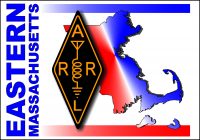

 Bob Salow, WA1IDA writes:
Bob Salow, WA1IDA writes: Ed Weiss, W1NXC received the prestigious Herb S. Brier Instructor of the Year Award this past Thursday night at the Framingham ARA’s “Night Out” Dinner at the Pacific Buffet in Framingham. Presenting the award and gift certificate were ARRL New England Division Director Tom Frenaye, K1KI and Eastern Massachusetts Section Manager Phil Temples, K9HI. Many of the club members in attendance stood up and gave testimony to Ed’s ceaseless and unwavering commitment to volunteer teaching of Amateur Radio material spanning many years.
Ed Weiss, W1NXC received the prestigious Herb S. Brier Instructor of the Year Award this past Thursday night at the Framingham ARA’s “Night Out” Dinner at the Pacific Buffet in Framingham. Presenting the award and gift certificate were ARRL New England Division Director Tom Frenaye, K1KI and Eastern Massachusetts Section Manager Phil Temples, K9HI. Many of the club members in attendance stood up and gave testimony to Ed’s ceaseless and unwavering commitment to volunteer teaching of Amateur Radio material spanning many years.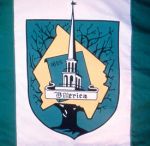 Ken, WO1N writes:
Ken, WO1N writes: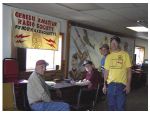 Doing its part to spread public awareness about Amateur Radio, the Genesis ARS staffed a display table and demonstration station at Plymouth’s “Airport Fun Days” on August 31. The exhibit featured a colorful banner with the club’s name. GARS members report that they gained valuable insight into how to “do it better in the future.”
Doing its part to spread public awareness about Amateur Radio, the Genesis ARS staffed a display table and demonstration station at Plymouth’s “Airport Fun Days” on August 31. The exhibit featured a colorful banner with the club’s name. GARS members report that they gained valuable insight into how to “do it better in the future.” Eastern Massachusetts Section Emergency Coordinator Mike Neilsen, W1MPN recommends that amateurs contact their DECs, update their contact information and indicate their availability should Hurricane Isabel impact our area. See
Eastern Massachusetts Section Emergency Coordinator Mike Neilsen, W1MPN recommends that amateurs contact their DECs, update their contact information and indicate their availability should Hurricane Isabel impact our area. See 
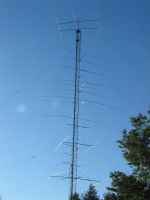
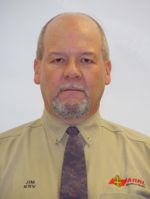 Jim Duarte, N1IV, has been nominated for the ARRL’s prestigious Philip J. McGan Memorial Silver Antenna Award. The McGan award is given annually to the individual who demonstrates volunteer public relations success on behalf of Amateur Radio at the local, state or national level, and will live up to the high standard of achievement exemplified by the late Philip J. McGan.
Jim Duarte, N1IV, has been nominated for the ARRL’s prestigious Philip J. McGan Memorial Silver Antenna Award. The McGan award is given annually to the individual who demonstrates volunteer public relations success on behalf of Amateur Radio at the local, state or national level, and will live up to the high standard of achievement exemplified by the late Philip J. McGan. Bob Salow, WA1IDA writes:
Bob Salow, WA1IDA writes: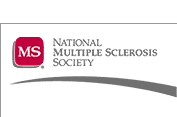 Rick Cantin, AA1TI wrote:
Rick Cantin, AA1TI wrote: Pi, K1RV wrote:
Pi, K1RV wrote: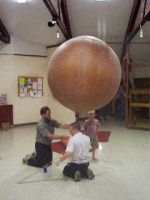 Ted T. Wright tedwright@csi.com wrote:
Ted T. Wright tedwright@csi.com wrote: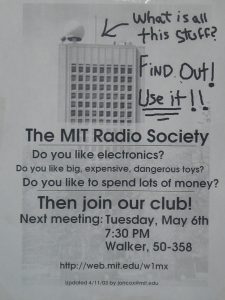
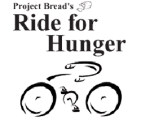 Project Bread is again sponsoring the Ride for Hunger on Sunday, September 14. This ride raises funds to support feeding programs all across the Commonwealth. With the high level of unemployment, our efforts are needed more than ever. The Crocker Public Service Group was a vital part of raising over $250,000 last year. Our team provides crucial safety links to the 1,000 cyclists in this tour.
Project Bread is again sponsoring the Ride for Hunger on Sunday, September 14. This ride raises funds to support feeding programs all across the Commonwealth. With the high level of unemployment, our efforts are needed more than ever. The Crocker Public Service Group was a vital part of raising over $250,000 last year. Our team provides crucial safety links to the 1,000 cyclists in this tour. 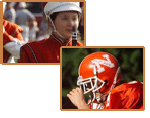 Alexander Rullo, KB1JLU wrote:
Alexander Rullo, KB1JLU wrote: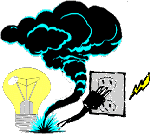 ARRL’s national web site carried summaries of Amateur Radio operations from the affected areas in the Midwest, New York and New England in the wake of yesterday’s major blackout. The following excerpt pertains to our section. It was based on a timely submission by EMa Public Information Coordinator Jim Duarte, N1IV:
ARRL’s national web site carried summaries of Amateur Radio operations from the affected areas in the Midwest, New York and New England in the wake of yesterday’s major blackout. The following excerpt pertains to our section. It was based on a timely submission by EMa Public Information Coordinator Jim Duarte, N1IV: The
The